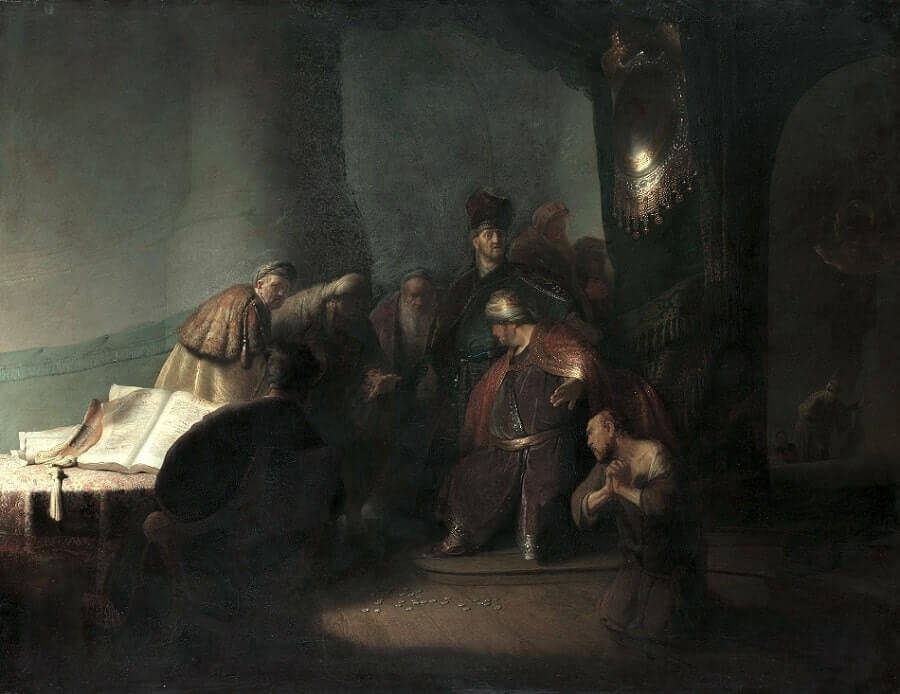Judas Repentant, Returning the Thirty Pieces of Silver, 1629 by Rembrandt

The story of the repentant Judas is told in the Gospel of Saint Matthew (27:3-5). Overcome by remorse following his betrayal of Christ, Judas returns to the Temple to give back the 30 pieces of silver he has received in payment. Rembrandt shows the moment when the repentant Judas is kneeling in front of the chief priests and the elders with the pieces of silver strewn across the floor. The High Priest, however, immediately turns away from Judas and distances himself and the other priests from any involvement ('What is that to us? See thou to that'). Seventeenth-century depictions of Judas are extremely rare because of the overwhelming disrepute in which his character was held, yet precedents for the iconographic tradition of the subject of the return of the pieces of silver can be found as far back as the Middle Ages.
Usually found in architectural decorations, these images were often combined with gruesome images of Judas's death. After the fourteenth century, however, the subject all but disappeared. In Rembrandt's time the story of Judas's repentance seems to reappear for the first time in a woodcut bible illustration by Christoph Murrer of about 1600, and there are a few further isolated instances of seventeenth-century illustrations of the story of Judas, though many of these post-date the present painting.
It is not clear where Rembrandt may have found the inspiration for the scene in this painting, but it is worth bearing in mind that he, much like his teacher Pieter Lastman and the other artists belonging to the generation immediately before Rembrandt, the so-called Pre-Rembrandtists, frequently developed new pictorial solutions for otherwise rarely depicted biblical subjects.




















